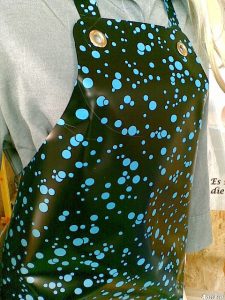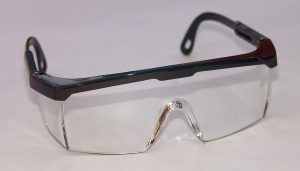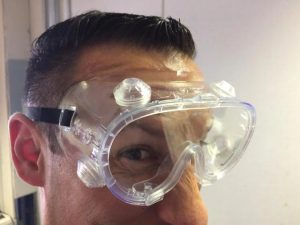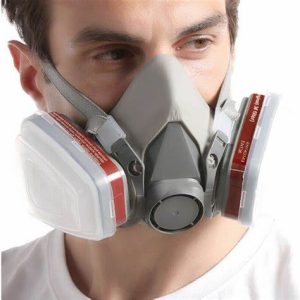7 Best Epoxy Resin Safety Tips You’ll Read This Year
Certainly! Here are some essential epoxy resin safety tips to ensure your well-being while working with this material:
Work in a Well-Ventilated Area: Epoxy resin can release harmful fumes. Always work in a room with proper ventilation, such as near an open window or with a ventilation system, to disperse these fumes.
Wear Protective Gear: Utilize personal protective equipment, including nitrile gloves, safety goggles, and a lab coat or apron. This will shield your skin and eyes from potential contact with epoxy.
Respiratory Protection: If you’re working with epoxy for extended periods, or in a poorly ventilated area, consider wearing a respirator with the appropriate organic vapor filters.
Follow Instructions: Carefully read and follow the manufacturer’s instructions for your specific epoxy resin product. Each product may have different safety guidelines.
Measure Accurately: Accurate measurements of resin and hardener are crucial. Use a scale or graduated mixing cups to ensure the right proportions.
Mix Thoroughly: Properly mix the resin and hardener according to the manufacturer’s instructions. Inadequate mixing can lead to curing issues and weak bonds.
Avoid Skin Contact: Epoxy resin can cause skin irritation or allergies. Wear gloves and, if you get epoxy on your skin, wash it off immediately with soap and water.
Eye Protection: Protect your eyes with safety goggles. If epoxy comes into contact with your eyes, rinse them immediately and seek medical attention.
Protect Your Clothing: Wear old or protective clothing, as epoxy can be challenging to remove from fabrics. Consider using disposable coveralls.
Keep Children and Pets Away: Ensure your work area is off-limits to children and pets, as epoxy materials are toxic if ingested.
First Aid Supplies: Have a first aid kit on hand with supplies for handling minor accidents or injuries.
Clean Tools and Equipment: Clean your tools, containers, and equipment promptly with acetone or the recommended solvent. Dispose of waste materials properly.
Dispose of Waste Safely: Dispose of epoxy resin waste according to local regulations. Do not pour excess resin down the drain.
Temperature Considerations: Epoxy may cure differently at varying temperatures. Follow the manufacturer’s guidelines for recommended working and curing temperatures.
Emergency Plan: Familiarize yourself with the procedures to follow in case of accidental exposure or ingestion. This may involve contacting a poison control center or seeking immediate medical attention.
Storage: Store epoxy materials in a cool, dry place away from direct sunlight and in their original containers. Keep them out of reach of children.
Avoid Food and Drink: Do not eat, drink, or smoke while working with epoxy resin to prevent contamination.
Practice Patience: Allow epoxy to cure in the recommended timeframe. Rushing the process can result in poor outcomes and potential safety hazards.
By following these epoxy resin safety tips, you can enjoy your creative projects while minimizing health and safety risks. Always prioritize your well-being when working with any potentially hazardous materials.
Also Like:- 10 Most Profitable Crafts
1. Wear gloves.
Certainly, wearing gloves is a crucial safety measure when working with epoxy resin. It helps protect your skin from direct contact with the resin, which can cause irritation or allergic reactions. When handling epoxy resin, make sure to wear nitrile gloves to keep your hands safe.
2. Have good ventilation in your work area.
Absolutely, ensuring good ventilation in your work area is essential when working with epoxy resin. Adequate ventilation helps disperse harmful fumes and minimizes the risk of inhaling potentially toxic vapors. Be sure to work in a well-ventilated space, like near an open window or with a ventilation system in place, to maintain a safe and breathable environment.
3. Wear a plastic apron.
Wearing a plastic apron is a wise safety precaution when working with epoxy resin. This protective apron can help shield your clothing from accidental spills or splatters of resin, making it easier to keep your work attire clean and preventing resin from coming into contact with your skin or clothing.
4. Wear safety goggles.
Certainly! “Wear safety goggles” is a clear and important safety instruction to protect your eyes when working with potentially hazardous materials or equipment. It’s crucial to follow such safety guidelines to prevent eye injuries.
5. Wear a respirator
“Wear a respirator” is another essential safety instruction, especially when dealing with environments or tasks that involve harmful dust, gases, fumes, or other airborne contaminants. Wearing a respirator helps protect your respiratory system from inhaling potentially dangerous substances. Always follow these safety recommendations to maintain your health and well-being.
6. Use a resin for arts and crafts.
Certainly! “Use resin for arts and crafts” is a creative and artistic instruction. Resin is a versatile material often used in crafting to create a glossy, clear finish or to encapsulate various objects within it. When working with resin, it’s important to follow the manufacturer’s guidelines and safety precautions to ensure a successful and safe crafting experience.
7. Have access to a resin kit’s safety data sheets.
Having access to a resin kit’s safety data sheets is crucial for your safety when working with resin. Safety data sheets (SDS) provide detailed information about the product, including its composition, potential hazards, handling instructions, and emergency measures. It’s essential to review the SDS to understand how to use the resin safely and to be prepared for any potential accidents or spills. This information ensures you can work with the resin in a responsible and informed manner.
















